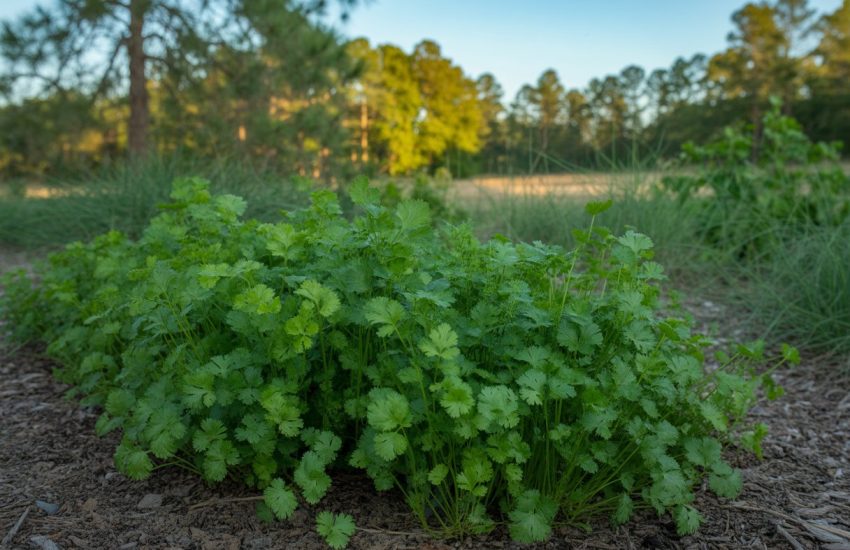Best Place to Plant Hydrangeas: Tips and Recommendations
Hydrangeas are beautiful flowering plants that can add a pop of color to any garden or landscape. However, not all locations are suitable for planting hydrangeas. Choosing the best place to plant hydrangeas is essential to ensure they thrive and produce vibrant blooms.
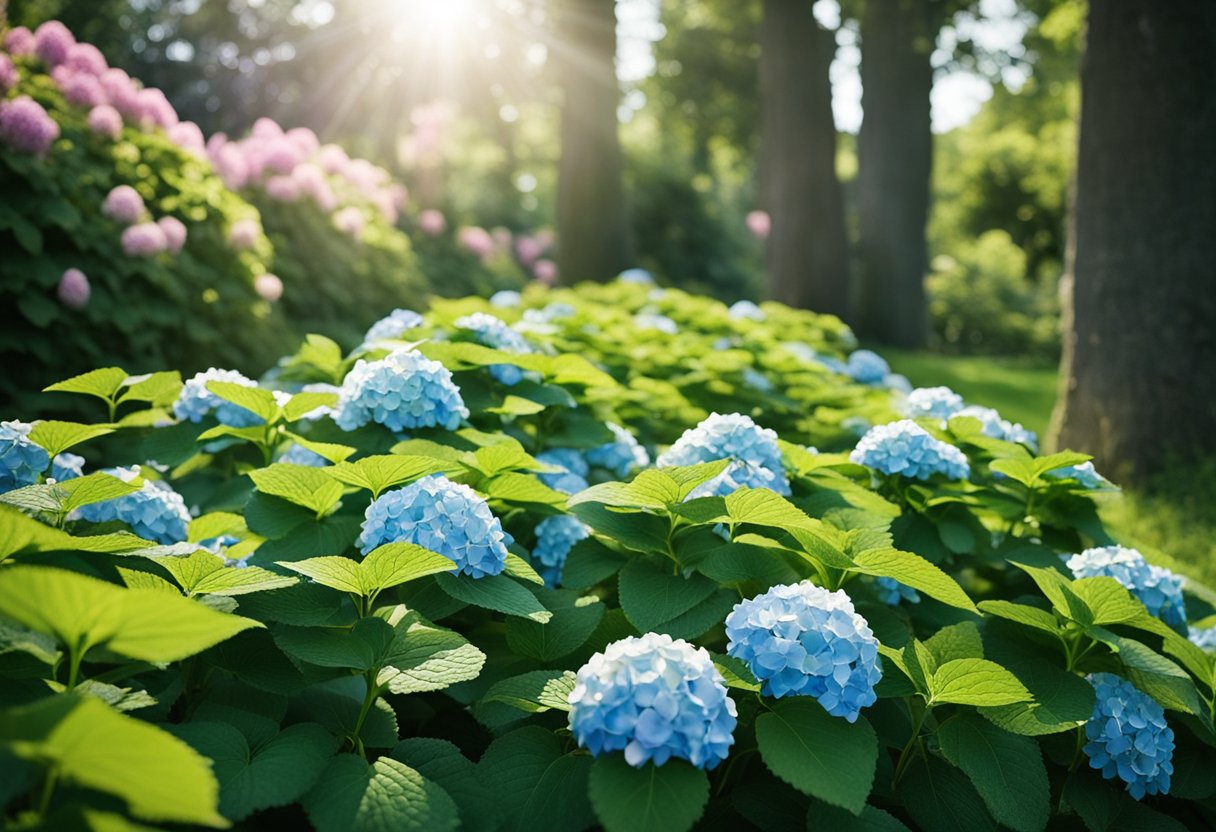
One of the most important factors to consider when planting hydrangeas is the amount of sunlight they will receive. While hydrangeas can tolerate some shade, they require at least four hours of sunlight per day to produce flowers. Planting hydrangeas in a location that receives too much direct sunlight can cause the blooms to wilt and fade quickly.
Another factor to consider is soil quality. Hydrangeas prefer moist, well-draining soil that is rich in organic matter. Planting hydrangeas in soil that is too dry or compacted can lead to stunted growth and poor flower production. It is also important to avoid planting hydrangeas in areas that are prone to standing water, as this can lead to root rot.
Understanding Hydrangeas
Hydrangeas are a popular choice among gardeners due to their large, showy flower heads and ability to thrive in a variety of climates. Understanding the species and varieties, botanical characteristics, climatic zones for planting, growth cycle, and colors of hydrangeas can help gardeners make informed decisions when planting these beautiful shrubs.
Species and Varieties
There are several species of hydrangeas, including bigleaf, smooth, oakleaf, and panicle. Each species has its own unique characteristics and preferred growing conditions. Within each species, there are also numerous varieties, such as lacecap and mophead. Hortensia is a common name for the mophead variety.
Botanical Characteristics
Hydrangeas are deciduous shrubs that can reach up to 15 feet tall, although some varieties are smaller. They have large, green leaves and produce flower heads that can range in size from a few inches to over a foot in diameter. The flower heads are made up of many small flowers that can be either fertile or sterile.
Climatic Zones for Planting
Hydrangeas can be planted in zones 3 to 9, but the specific variety will dictate the optimal growing conditions. Some varieties prefer full sun, while others do better in partial shade. It is important to research the specific needs of the variety being planted to ensure it will thrive in the chosen location.
Hydrangea Growth Cycle
Hydrangeas typically bloom in the summer, although some varieties may bloom in the spring or fall. After blooming, the flowers will gradually change color and eventually dry out. The shrub will then enter a period of dormancy before beginning the growth cycle again in the spring.
Hydrangea Colors
Hydrangeas come in a range of colors, including red, blue, purple, pink, and white. The color of the flower heads is determined by the pH level of the soil. Acidic soil will produce blue flowers, while alkaline soil will produce pink flowers. White flowers are not affected by soil pH.
Overall, understanding the different species and varieties, botanical characteristics, climatic zones for planting, growth cycle, and colors of hydrangeas can help gardeners make informed decisions when planting these beautiful shrubs.
Choosing the Right Location
Hydrangeas are beautiful and versatile plants that can be grown in a variety of locations. Choosing the right location is essential for the success of your hydrangeas. In this section, we will discuss the key factors to consider when selecting the perfect spot for your hydrangeas.
Sunlight and Shade
Hydrangeas grow best in partial shade or filtered sunlight. They can tolerate full sun in cooler climates, but in hot climates, they need protection from the afternoon sun. Morning sun and afternoon shade are ideal for most hydrangea varieties.
Soil Requirements
Hydrangeas prefer well-drained soil that is rich in organic matter. They grow best in acidic soil with a pH of 5.2 to 6.2, but they can also tolerate slightly alkaline soil. It is important to avoid planting hydrangeas in heavy clay soil, as this can lead to root rot.
Space and Positioning
Hydrangeas need enough space to grow and spread out. They should be planted at least 3 feet apart to allow for proper air circulation. When positioning your hydrangeas, consider the direction of the sun and the location of your house or shed. Hydrangeas should be planted on the north or east side of your house or shed to protect them from the hot afternoon sun.
Protecting from Elements
Hydrangeas are sensitive to wind, heat, and temperature changes. They should be protected from strong winds and extreme heat to prevent wilting and damage to the leaves. In areas with high humidity, hydrangeas are prone to fungal diseases, so it is important to provide good air circulation and avoid overhead watering.
By considering these factors when choosing the right location for your hydrangeas, you can ensure that they will thrive and provide you with beautiful blooms for years to come.
Soil Preparation and Planting
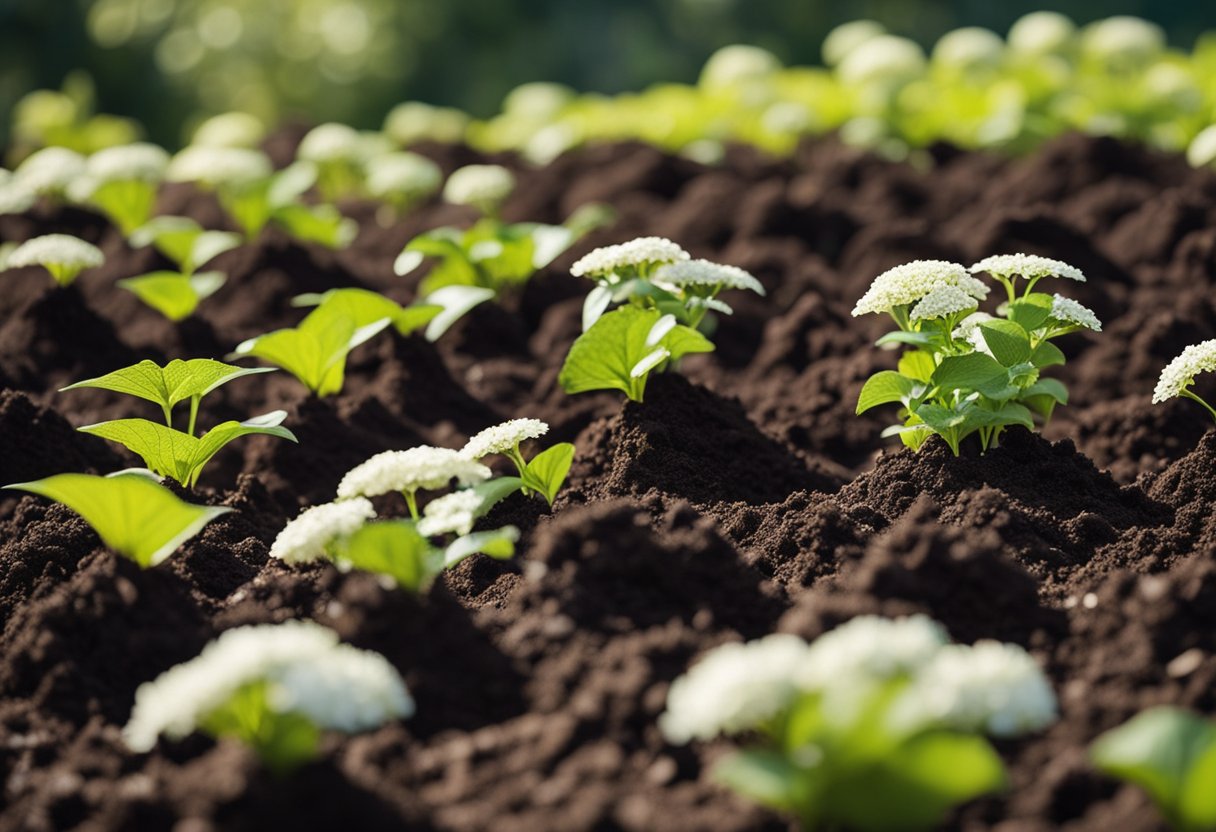
Enhancing Soil Quality
Before planting hydrangeas, it is important to ensure that the soil is of good quality. Hydrangeas thrive in well-draining soil that is rich in organic matter. Adding compost or other organic matter to the soil can help improve its quality and provide the necessary nutrients for the plants to grow and thrive. It is important to ensure that the soil has good drainage to prevent waterlogging and root rot.
Planting Hydrangeas
The best time to plant hydrangeas is in the spring or fall when the temperatures are mild. When planting hydrangeas, it is important to dig a hole that is twice the size of the root ball. The plant should be placed in the hole so that the top of the root ball is level with the soil surface. Backfill the hole with soil and gently press down to ensure that the plant is secure.
Watering and Moisture Control
Hydrangeas require consistent moisture to thrive. It is important to water the plants regularly, especially during dry periods. However, overwatering can lead to root rot, so it is important to ensure that the soil is well-draining. Mulching around the base of the plant can help to retain moisture and regulate soil temperature.
In summary, planting hydrangeas requires good soil preparation, including adding organic matter and ensuring good drainage. When planting, it is important to dig a hole that is twice the size of the root ball and to water the plants regularly while avoiding overwatering. By following these simple steps, gardeners can ensure that their hydrangeas grow and thrive in their garden.
Hydrangea Care and Maintenance
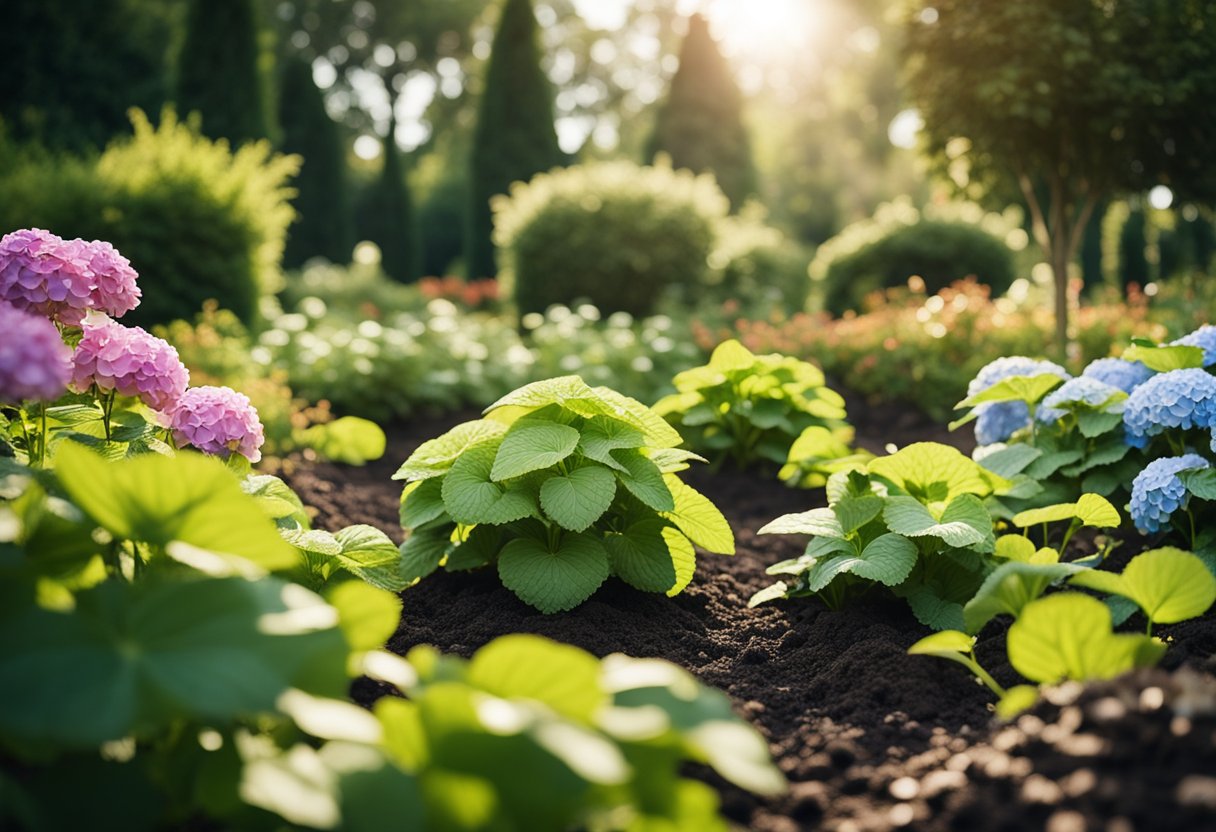
Pruning Techniques
Pruning is an essential part of hydrangea care. It helps to maintain the plant’s shape, promote healthy growth, and encourage blooming. The best time to prune hydrangeas depends on the variety. For example, if you have a hydrangea that blooms on old wood, such as the mophead or lacecap varieties, prune them after they finish blooming. If you have a hydrangea that blooms on new wood, such as the panicle or smooth hydrangeas, prune them in late winter or early spring.
When pruning hydrangeas, it’s important to use the right tools and techniques. Use sharp, clean shears to make clean cuts. Cut at a 45-degree angle, just above a healthy bud. Remove any dead, damaged, or diseased wood. If you’re pruning to control the size of the plant, remove up to one-third of the plant’s height.
Fertilization and Nutrients
Hydrangeas require regular fertilization to thrive. They need a balanced fertilizer that contains equal parts nitrogen, phosphorus, and potassium. Fertilize hydrangeas in early spring, just as new growth begins. Apply the fertilizer evenly around the base of the plant, and water well.
In addition to fertilizer, hydrangeas benefit from regular applications of compost or other organic matter. This helps to improve soil quality and provide essential nutrients.
Pest and Disease Management
Hydrangeas are generally healthy plants, but they can be susceptible to certain pests and diseases. Common pests include aphids, spider mites, and scale insects. These can be controlled with insecticidal soap or other insecticides.
Diseases that can affect hydrangeas include powdery mildew, leaf spot, and root rot. These can be prevented by providing good air circulation, avoiding overhead watering, and ensuring proper drainage. If you notice any signs of disease, remove and destroy infected plant material.
By following these simple care and maintenance tips, you can enjoy beautiful, healthy hydrangeas in your garden for years to come.
Propagation and Cultivation
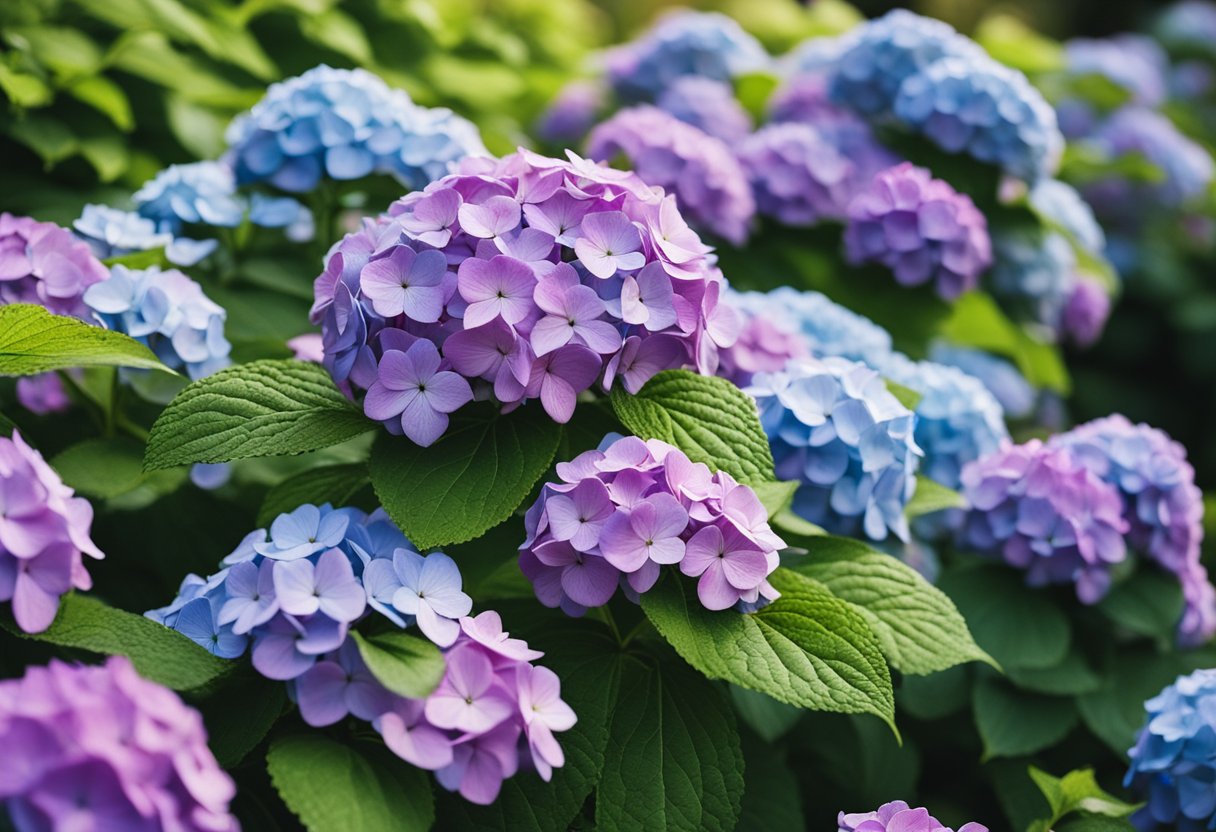
Propagating Hydrangeas
Hydrangeas can be propagated through various methods, including cuttings and division. The most common method is taking cuttings from the plant and rooting them in a rooting hormone. This process requires taking a cutting from a healthy plant, removing the lower leaves, and dipping the cut end into rooting hormone before planting it in a well-draining soil mix. It is important to keep the soil moist and the cutting in a shaded area until it has developed roots.
Another method of propagation is through division. This involves separating a healthy plant into smaller sections, each with its own roots and stems. This is best done in the early spring before new growth has begun, and the plant should be watered well after planting to encourage new root growth.
Cultivar Selection
When selecting a cultivar to grow, it is important to consider the specific needs of the plant, such as soil type, sun exposure, and climate. Hydrangeas come in a variety of colors and sizes, so it is important to choose a cultivar that fits your desired aesthetic and growing conditions.
Some popular cultivars include the ‘Endless Summer’ series, which blooms continuously throughout the growing season, and the ‘Limelight’ hydrangea, which features large, cone-shaped flowers that turn from green to pink as they age. It is important to research the specific needs of each cultivar before planting to ensure the best possible growth and blooming.
Seasonal Considerations

Winter Care
Hydrangeas are hardy plants that can survive in most climates, but they do require some winter care. In areas with harsh winters, it’s important to protect the plant’s roots with a layer of mulch. This will help insulate the roots and prevent them from freezing. It’s also a good idea to prune the plant in late fall to remove any dead or damaged branches. This will help the plant focus its energy on new growth in the spring.
Summer Maintenance
Hydrangeas require regular maintenance during the summer months to ensure healthy growth and abundant blooms. It’s important to water the plants regularly, especially during periods of hot, dry weather. Hydrangeas also benefit from regular fertilization to promote healthy growth and flowering. Deadheading spent blooms can also encourage the plant to produce more flowers.
When selecting a location to plant hydrangeas, it’s important to consider their mature size and bloom time. Hydrangeas come in a variety of sizes, from small shrubs to large trees, so it’s important to choose a location that can accommodate the plant’s mature size. Bloom time can also vary depending on the variety, so it’s important to choose a location that gets the right amount of sun for the specific type of hydrangea you’re planting.
Overall, hydrangeas are beautiful and easy-to-grow flowering shrubs that can add color and interest to any garden. With proper care and maintenance, they can thrive for many years, providing beauty and enjoyment season after season.
Landscape Integration

When it comes to landscaping with hydrangeas, there are a few things to keep in mind to ensure that they are integrated seamlessly into your garden. Companion planting and container gardening are two popular methods that can help you achieve this.
Companion Planting
Hydrangeas can be paired with a variety of other plants to create a visually stunning garden. Some popular options include:
- Hostas: These leafy plants complement the large blooms of hydrangeas and provide contrasting foliage.
- Ferns: Ferns add texture and depth to a garden and can be used to fill in empty spaces around hydrangeas.
- Heuchera: This plant has colorful foliage that can complement the blooms of hydrangeas and add interest to your garden.
When selecting companion plants, it is important to consider their growing requirements and ensure that they are compatible with hydrangeas.
Container Gardening
If you have limited space or want to add hydrangeas to a patio or balcony, container gardening is a great option. When planting hydrangeas in pots or containers, it is important to choose a container that is large enough to accommodate the plant’s root system. A container that is at least 18 inches in diameter is recommended.
When planting in containers, it is important to use high-quality potting soil and ensure that the container has adequate drainage. Hydrangeas also require regular watering, especially in hot weather, so be sure to keep the soil moist.
Overall, whether you choose to incorporate hydrangeas into your garden through companion planting or container gardening, they are sure to add beauty and interest to your outdoor space.
Advanced Topics
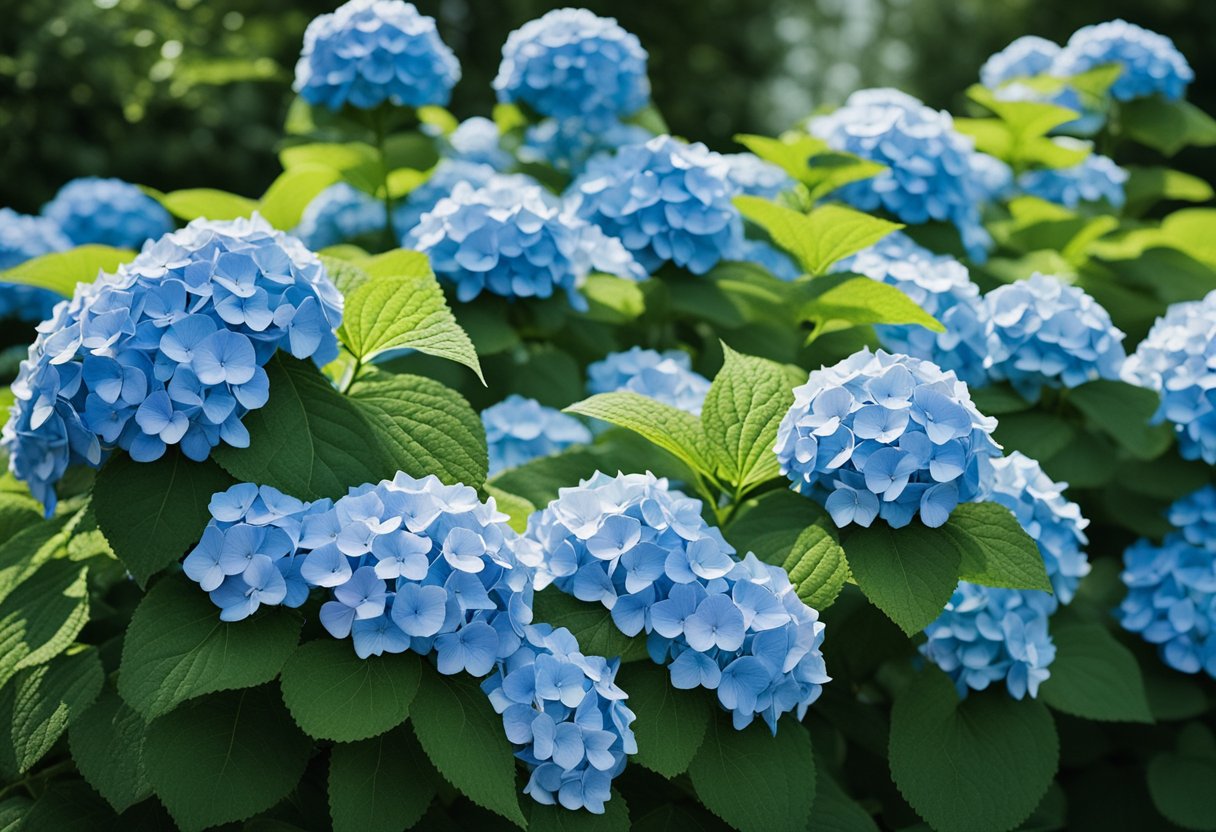
Altering Soil pH
Hydrangeas are known for their ability to change color based on the pH of the soil they are planted in. For those looking to alter the color of their hydrangeas, it’s important to understand the relationship between soil pH and flower color.
Mophead hydrangeas, which are the most commonly grown type, will produce blue flowers in acidic soil with a pH of 5.5 or lower. On the other hand, they will produce pink flowers in alkaline soil with a pH of 6.5 or higher. Panicle hydrangeas, however, are not affected by soil pH and will always produce white flowers.
To lower the pH of the soil, one can add elements such as sulfur, aluminum sulfate, or iron sulfate to the soil. To raise the pH, one can add lime or wood ashes. It’s important to note that altering soil pH can take time and should be done gradually.
Maximizing Flowering
To maximize flowering, it’s important to understand the difference between old wood and new wood. Old wood refers to the previous year’s growth, while new wood refers to the current year’s growth.
Mophead hydrangeas produce flowers on old wood, while panicle hydrangeas produce flowers on new wood. To ensure maximum flowering on mophead hydrangeas, it’s important to avoid pruning old wood. Instead, prune after flowering and only remove dead or damaged wood.
For panicle hydrangeas, pruning can be done in late winter or early spring before new growth begins. This will encourage the growth of new wood and result in more flowers.
In addition to proper pruning, it’s important to provide hydrangeas with adequate water and nutrients. A balanced fertilizer with a higher phosphorus content can help promote flowering. It’s also important to avoid over-fertilizing, as this can lead to excessive foliage growth at the expense of flower production.
Frequently Asked Questions

What are the optimal conditions for planting hydrangeas in the garden?
Hydrangeas thrive in well-drained soil that is rich in organic matter. They prefer a slightly acidic soil with a pH between 5.2 and 6.5. Hydrangeas also require regular watering, especially during hot and dry weather. Planting hydrangeas in a location that receives partial shade is ideal, as they can be sensitive to direct sunlight.
Which hydrangea varieties thrive in full shade environments?
Some hydrangea varieties that thrive in full shade environments include the Oakleaf hydrangea (Hydrangea quercifolia), the Climbing hydrangea (Hydrangea anomala petiolaris), and the Bigleaf hydrangea (Hydrangea macrophylla). These varieties can tolerate low light conditions and still produce beautiful blooms.
How do you successfully grow hydrangeas from cuttings?
To grow hydrangeas from cuttings, take a cutting from a healthy hydrangea plant in late spring or early summer. Cut a 6-inch stem that has at least two sets of leaves, and remove the leaves from the bottom half of the stem. Dip the cut end of the stem in rooting hormone powder and plant it in a container filled with a mixture of peat moss and perlite. Keep the soil moist and place the container in a location that receives bright, indirect light.
What type of soil is ideal for growing healthy hydrangeas in pots?
Hydrangeas grown in pots require a well-draining soil that is rich in organic matter. A mixture of peat moss, perlite, and potting soil is ideal. The pot should have drainage holes to prevent water from accumulating at the bottom and causing root rot. Hydrangeas grown in pots require more frequent watering than those planted in the ground, as the soil in pots tends to dry out faster.
When can gardeners typically expect hydrangeas to bloom?
Hydrangeas typically bloom in the summer months, with some varieties beginning to bloom in late spring. The exact timing of blooming can vary depending on the variety and growing conditions. Gardeners can expect to see blooms on their hydrangeas from late spring to early fall.
Is it better to plant hydrangeas in the ground or keep them in pots?
Both planting hydrangeas in the ground and keeping them in pots have their advantages and disadvantages. Hydrangeas planted in the ground can grow larger and produce more blooms, but require more space and maintenance. Hydrangeas grown in pots are more versatile and can be moved to different locations, but require more frequent watering and fertilization. Ultimately, the decision on whether to plant hydrangeas in the ground or in pots depends on the gardener’s preferences and available space.

